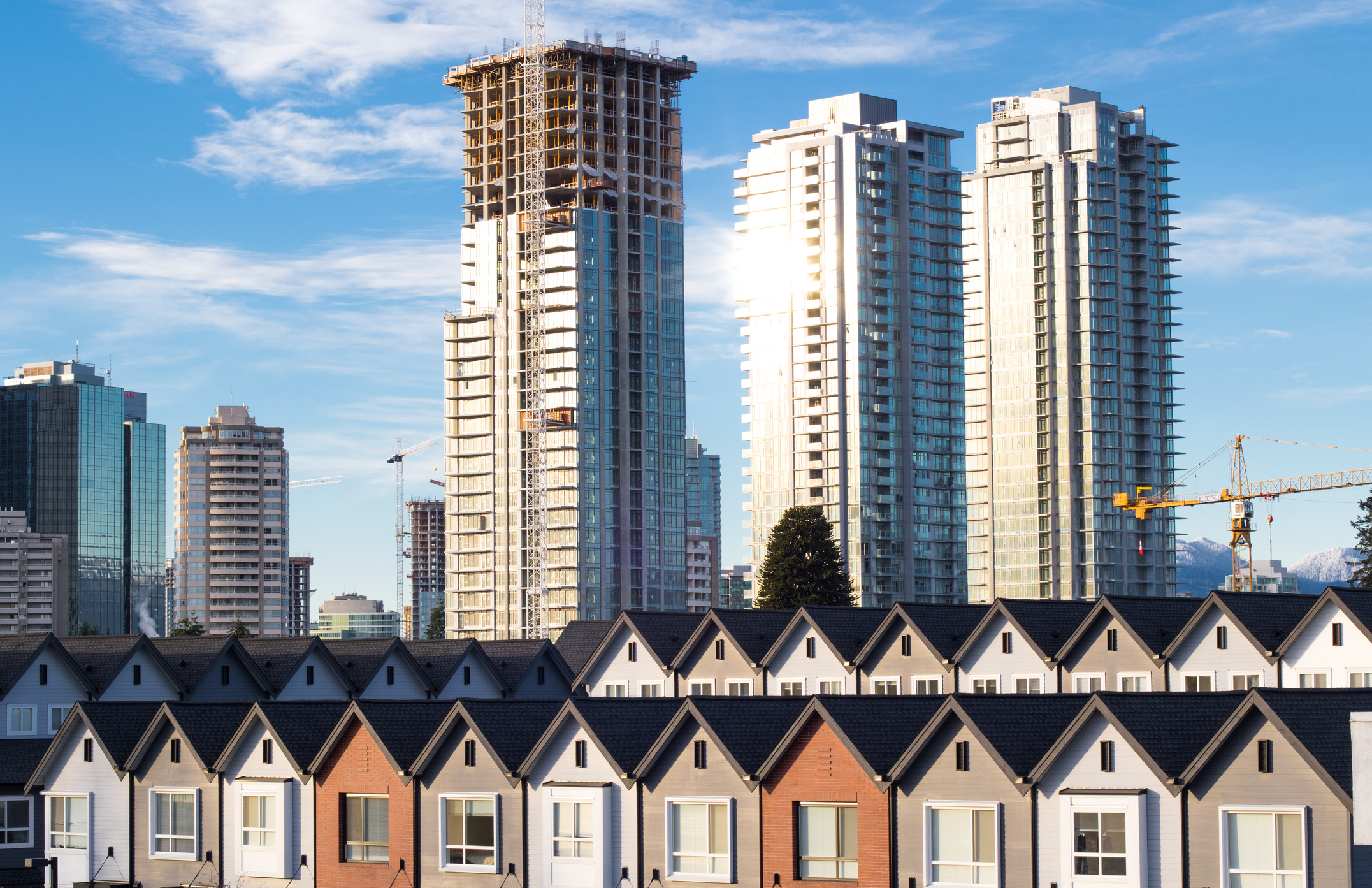In the greater Vancouver area and the Lower Mainland, demographics, affordability, opportunity, and the increased focus on energy efficiency among various stakeholders are the strongest factors driving trends in the multi-residential market.
Demographics & Affordability
Baby boomers are reaching retirement age and are downsizing from a single-family home as part of their retirement plan. Although this demographic of people are ready to downsize, many are still not quite ready for condo living. This is one of a few reasons why we have seen a recent increase in the townhome market. Besides rising construction and development costs, there is simply not enough single-family housing in Vancouver to make the market competitive, thus decreasing their affordability and driving first-time buyers into the condo market or to renting.
Pressures concerning affordability are continuously reducing the size of new condo units, many down to less than 500 square feet in area. In addition, more owners are addressing rising costs by adopting secondary suites or ‘mortgage helpers’. As a result, rental apartment developments are increasingly active in response to the high demand, with many targeting high-end renters. Luxury rental units with full air conditioning and luxurious finishes are becoming common.
Opportunities
Mixed use, multi-family buildings are the most prevalent trend in new construction. More amenities, services and retail spaces are located directly below multi-residential buildings, reducing the need for travel and attracting more buyers. These types of multi-family buildings provide a great opportunity for everyone involved, including the developer, building owner and both the retail and residential tenants.
To accommodate the increased demand for multi-family and mixed-use buildings, developers are partnering with owners of large parking lots that are underutilized, such as shopping malls and churches. This type of partnership benefits both parties, as the developer finds the land to develop, and the shopping malls or churches are financed and redeveloped with high-density residential properties surrounding them, giving them a fresh start.
Energy Efficiency & Regulatory Standards
New regulations and building codes are being introduced that are continually pushing increased energy efficiencies to reduce residential and commercial buildings’ carbon footprint. In British Columbia, the “Step Code” that came into effect in late 2017 provides a performance-based compliance method to building energy management— with an eventual target of being “net zero ready” by 2032.
A growing construction standard being used in lieu of LEED (Leadership in Energy and Environmental Design) certification is called Passive House, which focuses strictly on energy density rather than overall sustainability. Passive House is a standard originating from Germany and targets the reduction of energy density to about one-fifth of the current standards. Cities are promoting the adoption of these high-performance standards by offering reductions in development time or other incentives. Many cities are promoting and developing district energy utilities, trying to take advantage of waste heat facilities, as well as the current low cost of natural gas. Connection to the district energy is mandated by the cities if the property falls within their development zones.
It is likely that the current residential building trends that we are seeing in Vancouver and the Lower Mainland will continue to dominate in the future. Rental and residential mixed-used condos will remain popular to accommodate the market demand. Lack of affordability will still be an obstacle with higher costs of land, materials, labour and increased construction standards. This will continue to reduce the size of apartments or cause buyers to find alternate methods of financing. Federal, provincial or municipal regulations and building codes will continue to pursue their efforts to improve energy efficiency and sustainability. However, some very specific energy-efficiency building trends may wain due to climatic impracticalities in many locations, as the cost to build may not see a real payback in some climates.
